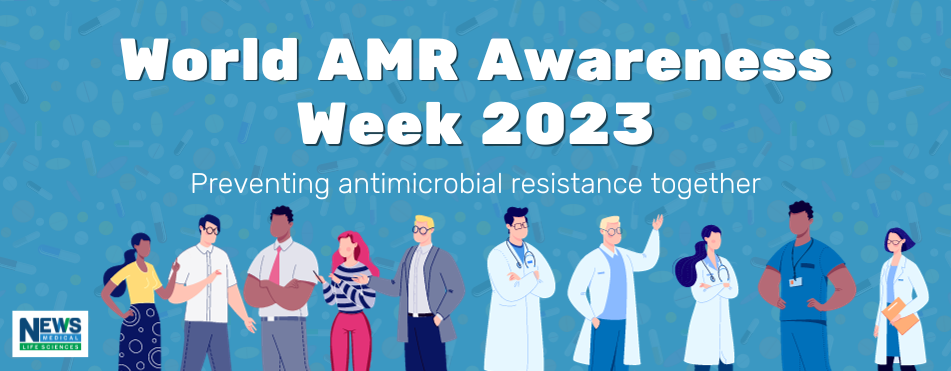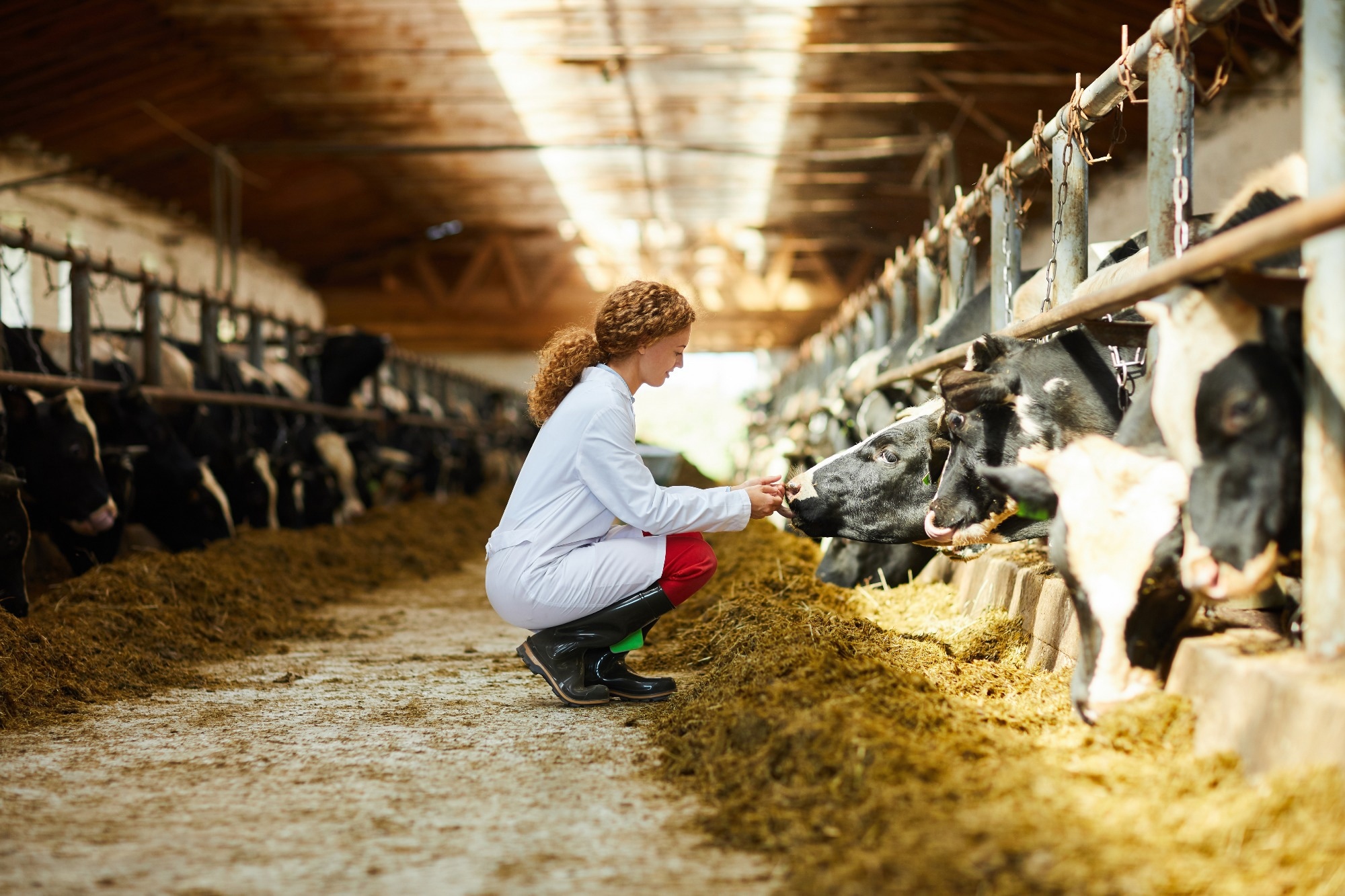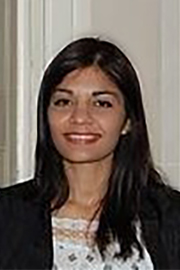In this exclusive interview, we are joined by Dr. Delfy Góchez, a renowned veterinarian from El Salvador and a vital member of the World Organisation for Animal Health (WOAH) since 2016. Dr. Góchez serves in the Antimicrobial Resistance and Veterinary Products Department, where she plays an instrumental role in supporting countries globally in their efforts to manage the use of antimicrobials in animals.
Join us as Dr. Góchez shares her profound insights and experiences in this crucial field, shedding light on the intricate relationships between animal and human health and the concerted efforts required to combat antimicrobial resistance.
Please introduce yourself, briefly outline your career, and tell us more about The World Organisation for Animal Health (WOAH) and its mission.
My name is Delfy Góchez, and I am a veterinarian from El Salvador. I have been working at WOAH since 2016 as part of the Antimicrobial Resistance and Veterinary Products Department, where I support countries worldwide in analyzing the use of antimicrobials in animals.
Overall, the mission of the organisation is to improve animal health globally, thereby ensuring a better future for all. To do that, we collaborate with our members to strengthen national Veterinary Services and promote best practices in animal health, ultimately striving for a more sustainable society that benefits animals, humans, and the planet.
World AMR Awareness Week 2023 commences on the 18th of November with the theme "Preventing Antimicrobial Resistance Together." How important is World AMR Awareness Week, especially in the context of today's global health challenges? What does this theme mean to you?
World AMR Awareness Week (WAAW) for this year has great significance in the context of today's global health challenges. Antimicrobial Resistance (AMR) is a complex topic, often unfamiliar to the public. This year’s theme provides a crucial annual opportunity for countries worldwide to raise awareness of this global health threat to different audiences, from policymakers to health professionals and pet owners.
The theme ‘prevention’ is essential. Many people may not realize the gravity of AMR because they have not personally experienced its consequences, such as failed treatments that may result in prolonged hospital stays and burdening of healthcare services, life-threatening infections in both humans and animals, or reduced animal productivity due to ineffective antimicrobials. Hence, we must educate individuals on the responsible use of antimicrobials and strategies to slow the rise of AMR.
Equally important is the word ‘together’. Addressing AMR is not confined to a single sector; it requires collaboration across various scientific domains, including human health, animal health, plant health, and the environment.
Recently, we conducted a workshop in the Americas where countries simulated to present their antimicrobial use data results to different stakeholders, ranging from decision-makers, private veterinarians, and physicians to the public.
This exercise gave countries valuable lessons on tailoring messages to different age groups and profiles. For example, for the general public, if we want to address the youth, we need to consider that they prefer communicating through social media. At the same time, elderly people especially from rural areas, might rely on other channels, such as the radio.
To tackle AMR effectively, we must combine our efforts, engage with multiple stakeholders, and use various communication tools and channels. WAAW provides a unique platform to facilitate this collective action and address the critical issue of AMR.

How does ensuring the health of animals directly impact human health, especially in the context of AMR?
The health of animals is intricately linked to human health, particularly in the context of AMR. Our actions greatly impact our planet, and what affects animals can finally affect us.
As mentioned earlier, animals also get infectious diseases that require treatment. In the case of food-producing animals, if these diseases become untreatable due to AMR, it can lead to reduced production of essential animal protein, microminerals, and vitamins, causing food insecurity and affecting human nutrition.
It can also severely impact farmers' livelihoods, local economies, and international trade. Equally important, from an animal welfare point of view, the suffering of animals due to AMR-related diseases is an ethically unacceptable situation that can evoke a strong emotional response from different audiences.
Antimicrobials are also used in companion animals to treat bacterial infections. In fact, small animal veterinary practices often resemble the settings of human healthcare facilities. The same principle of animal welfare applies to companion animals, and given our close physical proximity to and social interactions with them, there is a risk of exposure to AMR.
This exposure can result in humans contracting diseases that are resistant to antimicrobials and vice versa, as pet animals can also be affected by resistant bacteria carried by their owners. In a nutshell, the health of animals and humans is intrinsically connected, and addressing AMR is crucial for safeguarding both.
What actions and initiatives are WOAH currently leading in the global fight against antimicrobial resistance?
One of the significant initiatives that WOAH is leading in the global fight against AMR is our ANIMUSE global database. Each year, we work together with approximately 150 WOAH Members who voluntarily respond to our annual survey questionnaire about antimicrobial use in animals.
These countries trust WOAH to safeguard and analyze their data, which we compile into an annual report with insights at both global and regional levels. These data are invaluable in understanding how different antimicrobials are used in the animal health sector.
We have now been collecting data from more than eight years, allowing us to provide trends over time. Notably, for the period between 2017 and 2019, we observed a global decrease of 13% in antimicrobial agents used in animals, adjusted by animal biomass.
Furthermore, we are actively empowering countries through the country portal of the database by providing them with various dashboards. This encourages them to take ownership of their data and make informed, science-based decisions on antimicrobial use. By facilitating the access to this valuable information, we collectively work to tackle AMR and safeguard the health of animals and humans worldwide.
 Image Credit: Pressmaster/Shutterstock.com
Image Credit: Pressmaster/Shutterstock.com
The "One Health" framework encompasses human, animal, plant, and environmental health. How do these areas intersect, and what challenges or opportunities does this bring in addressing AMR?
The One Health framework, which includes human, animal, plant, and environmental health, recognizes the intricate connections between these sectors, as well as their inter-dependency.
Challenges can come when different sectors decide to operate in isolation due to their unique perspectives of the problem. However, the real opportunity lies from collaboration as considering the problem from various angles can lead us to the best strategy and more targeted and impactful solutions.
In the animal health sector, we must refrain from using the highest critically important antimicrobial classes as first-line treatments unless supported by antimicrobial susceptibility testing and avoid their use to promote growth in healthy animals.
Through collaborative efforts and the exchange of insights, we can plan more effective strategies to combat AMR, to assure the health of everyone.
With the continuation of the World AMR Awareness Week theme "Preventing antimicrobial resistance together" from 2022 to 2023, are there new initiatives or shifts in strategy that WOAH plans for the coming year?
2024 will be a critical year to solidify One Health collaborations and accelerate the response to this global threat.
In collaboration with our partners, we will be supporting the upcoming United Nations General Assembly (UNGA) High-Level Meeting on AMR to achieve increased political commitments on this issue.
Additionally, the Fourth Global High-Level Ministerial Conference on Antimicrobial Resistance will be held next year for accelerating action on AMR. We expect that this event will lead to stronger political commitments that will continue to support the ones made in the past, where ministers from more than 70 countries agreed to.
- Reduce the total amount of antimicrobials used in animals and agriculture by at least 30-50% by 2030, galvanizing national and global efforts.
- Preserve critically important antimicrobials for human medicine, ending the use of medically important antimicrobials for non-veterinary medical use, including growth promotion in animals.
ANIMUSE will continue to play a key role in our support to Members to reach these targets, by helping the veterinary workforce understand and monitor antimicrobial use in a harmonized and comparable way, across time and, eventually, across sectors as well.
On parallel, we will continue to lead the global fight against antimicrobial resistance in the animal health sector by advocating, among others, for strengthening research and development (R&D) investments in new vaccines. According to a report generated by the R&D AMR Hub in 2021, less than 10% of the total investments in this area are allocated to animal health.
Given the large spectrum of animal species and diseases we cover, this investment rate is not adequate to provide successful results and therefore effective implementation of animal vaccination strategies. Indeed, several examples has proven the efficiency of vaccines in reducing the need for antimicrobials.
For instance, during the 80s and early 90s, in Norway, antimicrobial use was very high in cultured Atlantic salmon due to frequent issues with cold water vibriosis (Vibrio salmonicida) and furunculosis (Aeromonas salmonicida). To face this unsustainable situation, joint efforts from producers, the government, and academic R&D initiatives led to the developing of vaccines for those diseases.
Their implementation, along with improved health management, resulted in a drastic reduction in antimicrobial use: from a peak of 876 mg/kg in 1987 to 0.15 mg/kg in 2020, which is more than a 95% reduction.
Can you share a specific instance where cross-sectoral collaboration within the Quadripartite led to a breakthrough or significant advancement in the fight against AMR?
The Quadripartite acknowledges the need for surveillance data to inform the development of targeted, cost-effective interventions to tackle AMR. Following a One Health approach, the Quadripartite has brought together a group of experts from different sectors working on surveillance of antimicrobial use and AMR in humans, animals, plants, and the environment to develop guidelines for integrated surveillance to support countries in implementing their National Action Plans. It is expected that the guidelines will be published in the upcoming year.
Additionally, the Multi-Partner Trust Fund (MPTF) has been essential to prime implementation of both the AMR Global Action Plan and National Action Plans with the support of the Quadripartite organizations. From all of the projects currently in place that MPTF funds, I would like to highlight the global project focused on AMR in the environment that was concluded this year as often the environment is overlooked on National Action Plans.
As part of this project, several webinars were conducted to raise awareness towards the environmental dimensions of AMR and providing practical tools to support action on AMR in the environment. Five of the countries (Indonesia, Morocco, Peru, Tajikistan and Zimbabwe) with MPTF projects were selected for further capacity building training.
For this purpose, scoping interviews were conducted with representatives from relevant competent authorities representing different sectors, academia and other relevant stakeholders to conduct an assessment of the country socioeconomic context, to identify the types of challenges faced in relation to AMR and the types of interventions that would be feasible and sustainable for implementation through their national action plans.
This engagement of all relevant authorities and stakeholders ensured that countries took ownership of the interventions. This was further supported by the preparation of policy briefs for each country to ensure political commitment.
What is antimicrobial resistance (AMR)?
What challenges does WOAH face when translating global guidelines and recommendations into local actions, especially in diverse cultural and economic contexts? How are these challenges overcome?
Challenges mostly include technical limitations and language barriers in communication materials. However, some countries have successfully adapted WOAH materials into local languages, demonstrating the potential for overcoming these obstacles. Specific materials were also developed at national level with WOAH’s support, such as tools targeted to poultry and aquatic animal producers in Cambodia.
It is important to note that our standards published in the Terrestrial and Aquatic Animal Health Codes are accepted by WOAH Members. When implementing them, countries may face limitations due to contextual paradigms as well as conflicting priorities.
They should begin by considering their unique strengths, by identifying the gaps in available resources and challenges and gradually work towards aligning with WOAH's global standards.
Based on current trends, how do you foresee the relationship between animal health and human health evolving in the fight against AMR in the coming years?
In the fight against AMR, we have seen the establishment of strong communication channels. At global level, we regularly collaborate with other organizations like WHO, as exemplified by our recent joint workshop in Senegal where we provided guidance on how to analyze and produce an annual report on antimicrobial consumption in humans and animals.
We aim to replicate such initiative in other countries and/or subregions. Another example is the coordination in the update of our respective lists of priority antimicrobials as well as the joint recommendations on their use in our respective sectors.
At national level, countries have developed action plans on AMR, promoting the creation of national committees that serve as platforms for communication and decision-making. This collaborative approach between human and animal health sectors might have been the pioneering model of collaboration between sectors in many countries, and all these years they have been refining their mechanisms.
Other sectors, such as the environmental health one, are also joining these initiatives. This evolving relationship holds a promise for more effective AMR mitigation in the coming years.
How can the public support and participate in initiatives that ensure the health of animals and, consequently, benefit human health in the context of AMR?
The public's opportunities to support and participate in initiatives for animal health, thereby benefiting human health in the context of AMR, are infinite. Creativity knows no bounds, and individuals from diverse backgrounds have all the potential to spread the word about AMR.
In recent years, I have witnessed communication materials from short cartoons, songs with dancing animals, memory cards, personal testimonials, and even incorporating the topic into various forms of entertainment like horror series on streaming services.
This year, I am aware that colleagues in the Americas are proactively involving students from diverse fields, especially those we anticipate will play a crucial role in future national committees on AMR. This marks a significant shift from what might have been considered impossible just two decades ago.
The key message for anyone reading this interview and feeling that they ‘do not belong’ to the health sciences world is that any communication effort made by the public is never in vain.
Understanding and spreading the word on how to use antimicrobials responsibly, how to protect ourselves and everyone from diseases, and how to eventually prevent AMR, will definitely save lives, including those of our loved ones, and it is everyone's responsibility. We all have a role to play have a look to these materials and play your role. We count on you!
Where can readers find more information?
About Dr. Delfy Góchez
 Dr. Delfy Góchez is a distinguished veterinarian hailing from El Salvador who has dedicated their career to enhancing animal health and welfare on a global scale. Since 2016, she has been a pivotal member of the World Organisation for Animal Health (WOAH), formerly known as the Office International des Epizooties (OIE). At WOAH, Dr. Góchez plays a crucial role in the Antimicrobial Resistance and Veterinary Products Department.
Dr. Delfy Góchez is a distinguished veterinarian hailing from El Salvador who has dedicated their career to enhancing animal health and welfare on a global scale. Since 2016, she has been a pivotal member of the World Organisation for Animal Health (WOAH), formerly known as the Office International des Epizooties (OIE). At WOAH, Dr. Góchez plays a crucial role in the Antimicrobial Resistance and Veterinary Products Department.
Her primary responsibility at WOAH involves supporting countries worldwide in analyzing and regulating the use of antimicrobials in animals. This task is vital in controlling and reducing the spread of antimicrobial resistance, a growing concern in both veterinary and human medicine.
Underlying all of Dr. Góchez's endeavors is the overarching mission of the organization to improve global animal health. This objective is not only pivotal for the welfare of animals but also plays a critical role in securing a sustainable future for the planet and its inhabitants.
Dr. Góchez collaborates closely with member countries to strengthen national Veterinary Services and advocate for implementing best practices in animal health.